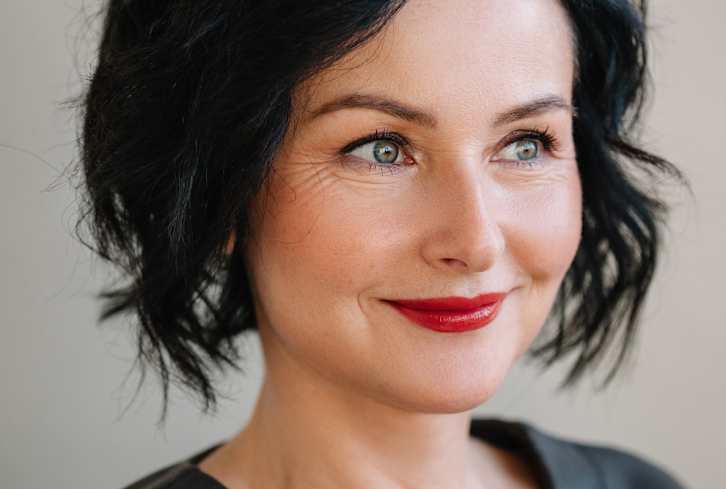Advertisement
3 Myths About Filler We Should Talk About More, From A Derm


Hyaluronic acid filler isn't anything new—in fact, it was invented over 30 years ago. However, modern beauty standards and plastic surgery trends have made it more prevalent than ever.
To be clear, we're not "for" or "against" getting filler; we think everyone should do whatever makes them feel their best. But with all of the buzz, it's essential to have a proper education about what these fillers do and who should think twice about them.
To come, three common myths busted by London-based dermatologist Aamna Adel, M.D.:
Myth: Filler only lasts a few years max
The general life of hyaluronic acid filler is six months to a couple of years. For this reason, many people feel comfortable jumping into the procedure. If you don't love it, it'll be gone in no time, right? Well, not exactly.
Adel explains in a TikTok video that some hyaluronic acid filler can last up to 12 years after it's been injected, as seen on MRI footage1.
Should your filler last longer than you desire, you still have the option to dissolve it—but that method is not as simple as it seems either.
Myth: You can easily dissolve your filler without downsides
Dermatologists and plastic surgeons use an enzyme called hyaluronidase2 to break down filler. The catch? "It has no way of being able to differentiate the filler from your body's own hyaluronic acid, so it just dissolves it all," Adel says.
Unfortunately, "It can take months for your body's hyaluronic acid levels to return to normal," she adds, which can lead to bumps and dryness.
Hyaluronic acid plays a huge role in your skin health—it helps keep your cheeks plump, texture smooth, and skin deeply hydrated. As you age, your skin naturally loses hyaluronic acid, which is part of the reason mature skin is often dry.
You can ingest hyaluronic acid in the form of HA supplements to support its production during the decline, which is a good idea given you're left with half your supply by age 503. Still, more significant loss from filler dissolver may be an uphill battle, even with supplements on hand.
Myth: Everyone responds the same to filler
With the prevalence of filler in models and celebrities that look 25 at 65, it's easy to assume filler is a one-size-fits-all solution. However, Adel warns that some people can react with significant swelling.
Because hyaluronic acid is a humectant, it draws water to the area where it's injected. "That's one of the reasons filler can end up looking quite puffy in some people, especially if too much filler has been injected or injected improperly," Adel says.
Take even more caution if you're constantly reaching for de-puffing devices already. "If you are somebody who already gets really puffy under-eyes when you wake up in the morning, then it may not be the best idea for you," she notes.
The choice is yours
3 quick tips for supporting full, juicy skin sans filler
Below, a few ways to support tight, plump skin without filler, if you prefer to skip it:
- Keep your skin deeply moisturized: Both inside and out, prioritize hydration. Layer on the serums, creams, and oils to protect your complexion from losing water and prematurely sagging or wrinkling.
- Prioritize protein: A diet rich in protein can help support tighter, firmer skin from within. Here are 16 tips to get more of this macronutrient in your diet.
- Try a retinol serum, or upgrade your current regimen: Retinol thickens the lower layers of the skin while thinning out the top layer (the stratum corneum), which creates a dewy glow. Try an over-the-counter retinol serum if you're new to the product category, or talk to your dermatologist about prescription-grade options.
The mbg POV
At mindbodygreen, we believe you should do whatever makes you feel best—this goes for both health and beauty routines. For the same reason, we prioritize education from certified experts so you can make informed decisions about your skin health.
The takeaway
Education on injectable fillers in social discourse is lacking, but it is essential to making informed decisions. As one dermatologist warns, there's no guarantee filler will go away in just a few months, as some can last up to 12 years.
Should you decide to dissolve your filler, the natural hyaluronic acid in your skin may suffer consequently before rebuilding months later. Lastly, you'll want to reconsider under-eye filler if you tend to wake up puffy in the morning as is.
Still, the choice is yours. Just so you know, there are plenty of steps for youthful-looking skin you can take without it.
3 Sources
- https://www.ncbi.nlm.nih.gov/pmc/articles/PMC9007185/
- https://www.ncbi.nlm.nih.gov/books/NBK545163/#:~:text=Hyaluronidase%20is%20an%20enzyme%20that%20temporarily%20and%20reversibly%20depolymerizes%20hyaluronic,allows%20fluids%20to%20flow%20through.
- https://www.jaad.org/article/S0190-9622%2816%2900202-4/fulltext#:~:text=The%20skin's%20hyaluronic%20acid%20(HA,of%20fine%20lines%20and%20wrinkles.


















